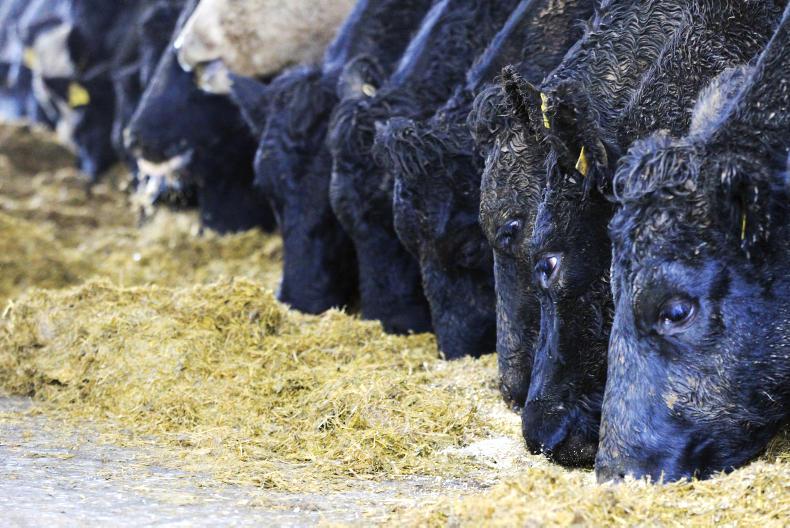Make sure finishing cattle have adequate feeding and lying space in sheds, otherwise weight gains will suffer as forward animals move on to higher levels of concentrate over the coming weeks.
While there may have been adequate housing space in October when cattle were housed, the situation will have changed by late January.
Weight gain
For example, take a group of 10 steers housed on 20 October at 500kg liveweight. At a daily liveweight gain averaging 0.6kg/day over winter, the steers will have gained 55kg to 60kg by the end of January.
Across the whole group, there is an additional 600kg of liveweight in the pen from housing weight, which is the equivalent of adding one extra animal to the group.
This means where concentrates are fed morning and night, there will be insufficient space for all animals to come forward to feed at the same time.
As a result, dominant cattle will eat more than their concentrate allocation, whereas shy animals will get less, thereby reducing performance and delaying slaughter date.
Reduce stocking pressure
If there is additional housing that can be used for finishing cattle, think about easing housing pressure by reducing stocking pressure in existing sheds.
Lying space
For weanlings under 300kg liveweight, lying space on slats should be at least 1.5m2, increasing to a minimum of 2.5m2 for animals over 300kg up to finishing weight. Again, if animals are on a straw bed, double this lying space requirement.






 This is a subscriber-only article
This is a subscriber-only article









SHARING OPTIONS: